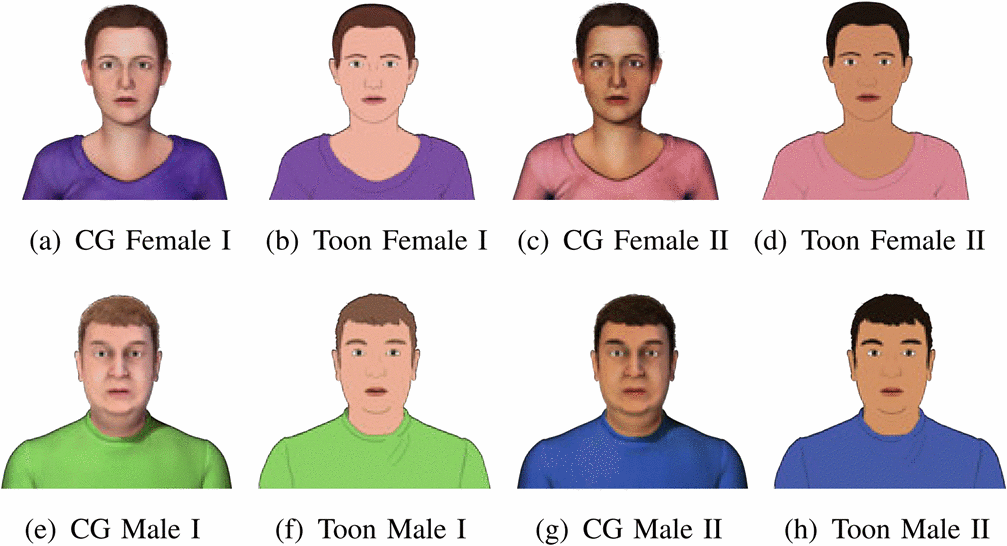Perceptual effects of damped and exaggerated facial motion in animated characters
| Jennifer Hyde | Elizabeth Carter | Sara Kiesler | Jessica Hodgins |
2013 10th IEEE International Conference and Workshops on Automatic Face and Gesture Recognition (FG) (July 15, 2013)

Common guidelines followed in the animation community include the idea that cartoon characters should be exaggerated to better convey emotion and intent, whereas more realistic characters should have “matching” realistic motion. We investigated the effects of rendering style and amount of facial motion on perceptions of character likeability, intelligence, and extraversion. We used cartoon and more realistic-looking characters that were animated with tracked actor motion. The motion was exaggerated and damped in 10% increments up to a 40% difference from the original motion. We discovered that motion changes ±20% from original motion affected perceptions of likeability and intelligence differently in the realistic-looking and cartoon characters. The realistic-looking characters benefited from increased motion whereas the cartoon characters benefitted from damped motion. Furthermore, the amount of facial motion and perceptions of extraversion were significantly correlated.
Jennifer Hyde, Elizabeth Carter, Sara Kiesler, Jessica Hodgins (July 15, 2013). Perceptual effects of damped and exaggerated facial motion in animated characters. 2013 10th IEEE International Conference and Workshops on Automatic Face and Gesture Recognition (FG).
@article{Hodgins:2017:DOE,
author={Jennifer Hyde, Elizabeth Carter, Sara Kiesler, Jessica Hodgins},
title={ Perceptual effects of damped and exaggerated facial motion in animated characters},
journal={2013 10th IEEE International Conference and Workshops on Automatic Face and Gesture Recognition (FG)},
year={July 15, 2013},

